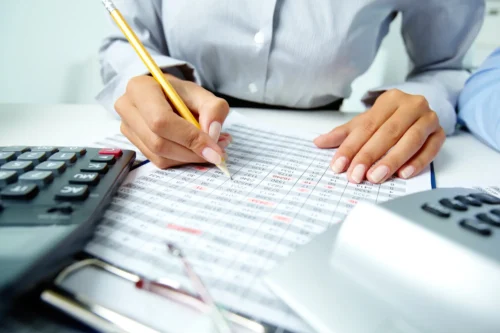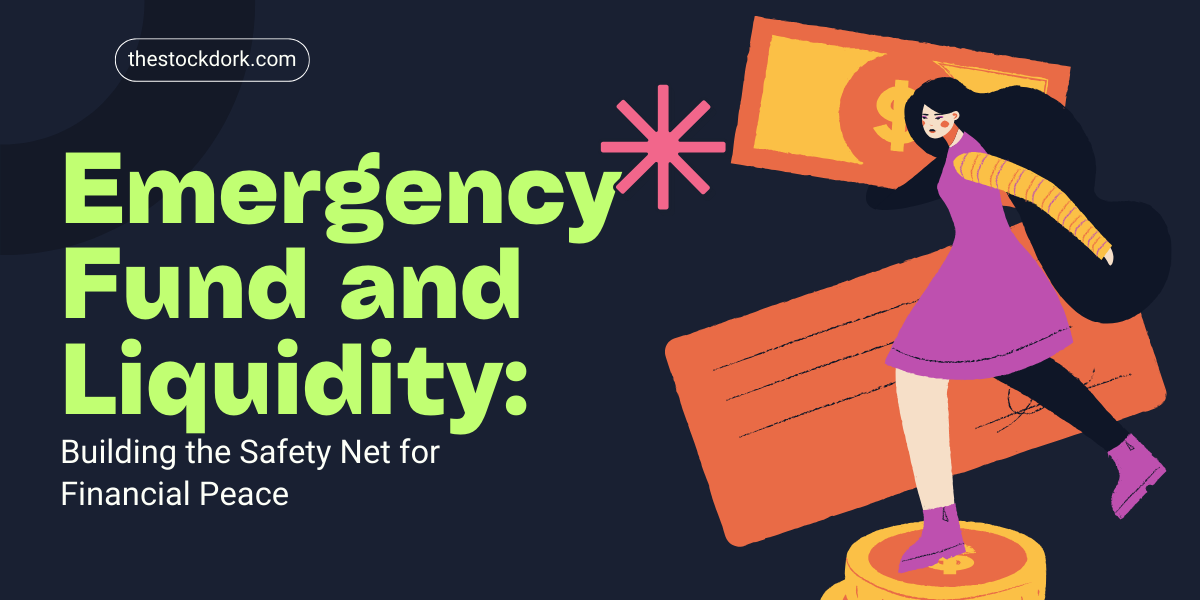Life has a way of surprising us. One day everything feels stable, and the next, an unexpected expense appears out of nowhere. A flat tire, a sudden medical bill, or even a job loss can quickly throw your finances off balance.
That’s why every healthy financial plan starts with two simple but powerful tools: an emergency fund and strong liquidity.

Let’s walk through this together, step by step, and help you feel more prepared and confident about your money.
Understanding the Emergency Fund
An emergency fund, sometimes called emergency savings, is money set aside to handle life’s surprises. It’s your financial safety net, a small but mighty reserve that keeps you from falling into debt when the unexpected happens.
Think of it as a cash cushion that absorbs financial shocks so you don’t have to rely on credit cards or loans.
Building this kind of security takes time, but it’s one of the most comforting things you can do for yourself and your family. Having even a few hundred dollars saved can turn a stressful situation into a manageable one.
Why an Emergency Fund Matters
The importance of an emergency fund goes far beyond just covering surprise bills.
It’s about stability and peace of mind. When you know you have money waiting to help you in an emergency, you gain confidence.
You can handle challenges calmly instead of reacting out of panic.
Sadly, many people don’t have that protection.
According to several studies, a large portion of Americans would struggle to cover a $1,000 unexpected expense. That statistic shows just how vital emergency savings are.
Having this kind of financial preparedness means you can face setbacks without spiraling into debt or fear. It keeps your finances—and your stress, under control.
How Much Emergency Fund Should You Have?
You’ve probably heard of the emergency fund rule of thumb: save three to six months of living expenses.
This is often called the emergency fund 3–6 months rule, and it’s a smart guideline to start with.
If you live alone and have a steady job, three months might be enough. If you have a family, work freelance, or your income varies, aim for closer to six months, or even more.
The goal is to have enough to keep your life running smoothly if your income suddenly stops.
To figure out how much you personally need, add up your essential monthly expenses like rent, utilities, food, and transportation. Multiply that by the number of months you want your fund to cover. That’s your target.
Liquidity in Personal Finance
Once you understand your savings goal, it’s time to think about liquidity in personal finance, how quickly you can turn your savings into cash when needed.
Liquidity simply means accessibility. The more liquid an asset is, the faster you can use it without losing value.
Cash in your checking account is very liquid. Stocks or real estate are less so, because selling them takes time and can involve losses. When it comes to emergencies, financial liquidity importance is huge.
You need funds you can reach immediately, without penalties or market risks.
That’s why your emergency money should always be stored in something stable and easy to access. A high-yield savings account emergency fund is a great choice. It earns a little interest while staying safe and available.
The key is balance, keeping your emergency savings liquid but separate from your everyday spending money.
Emergency Fund Liquidity and Where to Keep It
Choosing the right place for your emergency fund can feel confusing. You want safety, accessibility, and at least a bit of growth. Fortunately, several good options exist.
A high-yield savings account or money market account is ideal for most people. They keep your emergency fund liquidity high, meaning you can withdraw cash right away if needed.
If your fund is large, you might even place a portion in short-term Treasury bills. These are backed by the U.S. government, which makes them one of the safest investments around.
Some people consider certificates of deposit (CDs), but they can limit your flexibility. If you ever need to withdraw early, you might face penalties. For true emergencies, it’s best to keep things simple and liquid.
How to Build an Emergency Fund
Starting an emergency fund can feel overwhelming, especially if money is tight. But remember, every small step counts.
Begin with a small goal, maybe $500 or $1,000. That’s enough to handle most minor surprises.
Then keep adding a little each month. Setting up an automatic transfer from your checking account can make saving easier, you won’t even have to think about it.
Whenever you get a bonus, tax refund, or side income, put part of it into your emergency savings. Over time, those small deposits grow into something powerful.
This steady progress is how building financial resilience truly happens. You’re not just saving money; you’re buying peace of mind.
Emergency Fund vs. Savings Account
People sometimes wonder about the difference between an emergency fund vs savings account. After all, both involve setting money aside. The difference is purpose.
A savings account is for planned goals, vacations, new furniture, or future purchases. An emergency fund, on the other hand, is for the unplanned. It’s there for the things you didn’t see coming.

Why Liquidity Matters in Investing
Why liquidity matters is simple: it allows flexibility. If all your money is tied up in long-term assets like real estate or retirement accounts, you might struggle to cover sudden costs.
Maintaining liquid assets for emergency fund protection means you won’t need to sell investments when markets are down.
You can let your long-term money keep growing while your short-term safety net handles life’s bumps.
In that way, liquidity risk—the danger of not having access to cash when you need it, can quietly hurt even the best financial plans. Keeping a balance between savings and investments helps avoid that trap.
The Role of Emergency Funds in Financial Stability
A well-maintained emergency fund does more than cover bills. It strengthens your entire financial foundation. When you have savings ready, you can face tough moments without panic.
You avoid high-interest debt, keep your credit score intact, and stay focused on long-term goals.
This is what managing cash flow responsibly looks like. It’s not about perfection; it’s about preparation.
Your emergency fund acts as your personal safety valve, protecting you from stress and giving you room to make calm, thoughtful decisions.
Over time, this habit leads to true financial security—the kind that lasts.
Frequently Asked Questions
How much liquidity should I keep besides my emergency fund?
It’s smart to keep at least one extra month of expenses in your checking account for daily flexibility. That way, you won’t need to dip into your main emergency fund for small surprises.
How do I know if my emergency fund is enough?
If your fund could cover all your essential bills for three to six months, you’re doing great. If your job or income is unpredictable, consider building it larger for extra safety.
Can I invest my emergency fund in stocks?
No. Stocks can lose value quickly, which makes them risky for emergencies. Keep your emergency savings in liquid, stable places where the value won’t fluctuate.
Is a high-yield savings account good for my emergency fund?
Yes. It’s one of the best options because it combines safety, easy access, and modest growth through interest.
What are the biggest emergency fund benefits?
Peace of mind, financial independence, and the ability to handle life’s surprises without stress or debt. Those are benefits no investment can replace.
Conclusion
Your emergency fund isn’t just a pile of cash sitting in an account, it’s a symbol of confidence and care for your future self.
By focusing on liquidity and smart planning, you’re protecting your finances from life’s unpredictability.
It doesn’t matter if you start small. What matters is that you start. Each dollar you save brings you closer to lasting financial resilience and freedom.
And that feeling, the quiet assurance that you’re ready for whatever comes next, is worth every effort.


 Tags:
Tags:










